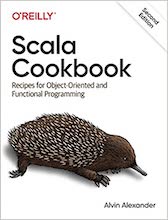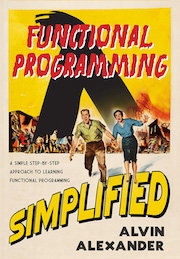Java example source code file (JAXBContextFactory.java)
The JAXBContextFactory.java Java example source code/*
* Copyright (c) 1997, 2012, Oracle and/or its affiliates. All rights reserved.
* DO NOT ALTER OR REMOVE COPYRIGHT NOTICES OR THIS FILE HEADER.
*
* This code is free software; you can redistribute it and/or modify it
* under the terms of the GNU General Public License version 2 only, as
* published by the Free Software Foundation. Oracle designates this
* particular file as subject to the "Classpath" exception as provided
* by Oracle in the LICENSE file that accompanied this code.
*
* This code is distributed in the hope that it will be useful, but WITHOUT
* ANY WARRANTY; without even the implied warranty of MERCHANTABILITY or
* FITNESS FOR A PARTICULAR PURPOSE. See the GNU General Public License
* version 2 for more details (a copy is included in the LICENSE file that
* accompanied this code).
*
* You should have received a copy of the GNU General Public License version
* 2 along with this work; if not, write to the Free Software Foundation,
* Inc., 51 Franklin St, Fifth Floor, Boston, MA 02110-1301 USA.
*
* Please contact Oracle, 500 Oracle Parkway, Redwood Shores, CA 94065 USA
* or visit www.oracle.com if you need additional information or have any
* questions.
*/
package com.sun.xml.internal.ws.developer;
import com.sun.istack.internal.NotNull;
import com.sun.xml.internal.bind.api.JAXBRIContext;
import com.sun.xml.internal.bind.api.TypeReference;
import com.sun.xml.internal.ws.api.model.SEIModel;
import javax.xml.bind.JAXBContext;
import javax.xml.bind.JAXBException;
import java.util.List;
/**
* Factory to create {@link JAXBContext}.
*
* <p>
* JAX-WS uses JAXB to perform databinding when you use the service endpoint interface, and normally
* the JAX-WS RI drives JAXB and creates a necessary {@link JAXBContext} automatically.
*
* <p>
* This annotation is a JAX-WS RI vendor-specific feature, which lets applications create {@link JAXBRIContext}
* (which is the JAXB RI's {@link JAXBContext} implementation.)
* Combined with the JAXB RI vendor extensions defined in {@link JAXBRIContext}, appliation can use this to
* fine-tune how the databinding happens, such as by adding more classes to the binding context,
* by controlling the namespace mappings, and so on.
*
* <p>
* Applications should either use {@link UsesJAXBContextFeature} or {@link UsesJAXBContext} to instruct
* the JAX-WS runtime to use a custom factory.
*
* @author Kohsuke Kawaguchi
* @since 2.1.5
*/
public interface JAXBContextFactory {
/**
* Called by the JAX-WS runtime to create a {@link JAXBRIContext} for the given SEI.
*
* @param sei
* The {@link SEIModel} object being constructed. This object provides you access to
* what SEI is being processed, and therefore useful if you are writing a generic
* {@link JAXBContextFactory} that can work with arbitrary SEI classes.
*
* @param classesToBind
* List of classes that needs to be bound by JAXB. This value is computed according to
* the JAX-WS spec and given to you.
*
* The calling JAX-WS runtime expects the returned {@link JAXBRIContext} to be capable of
* handling all these classes, but you can add more (which is more common), or remove some
* (if you know what you are doing.)
*
* The callee is free to mutate this list.
*
* @param typeReferences
* List of {@link TypeReference}s, which is also a part of the input to the JAXB RI to control
* how the databinding happens. Most likely this will be just a pass-through to the
* {@link JAXBRIContext#newInstance} method.
*
* @return
* A non-null valid {@link JAXBRIContext} object.
*
* @throws JAXBException
* If the callee encounters a fatal problem and wants to abort the JAX-WS runtime processing
* of the given SEI, throw a {@link JAXBException}. This will cause the port instantiation
* to fail (if on client), or the application deployment to fail (if on server.)
*/
@NotNull JAXBRIContext createJAXBContext(@NotNull SEIModel sei, @NotNull List<Class> classesToBind, @NotNull List
Other Java examples (source code examples)Here is a short list of links related to this Java JAXBContextFactory.java source code file: |
 The search page
The search page Other Java source code examples at this package level
Other Java source code examples at this package level Click here to learn more about this project
Click here to learn more about this project
